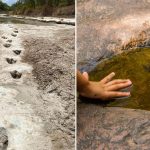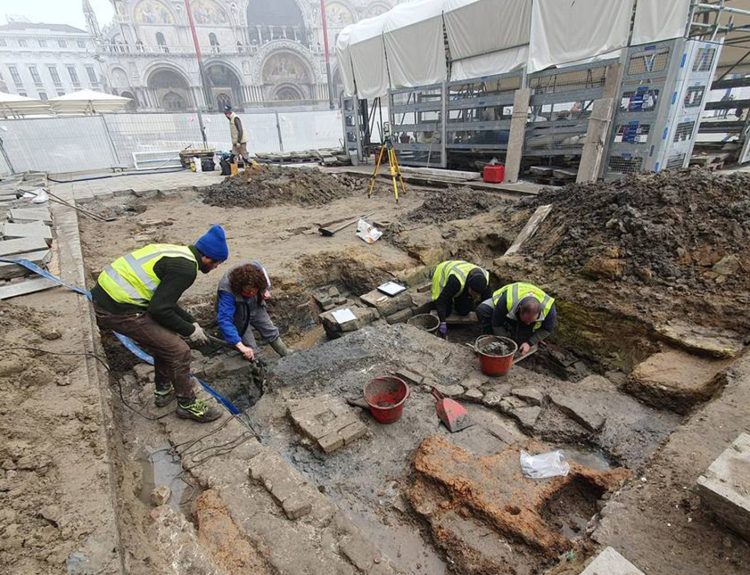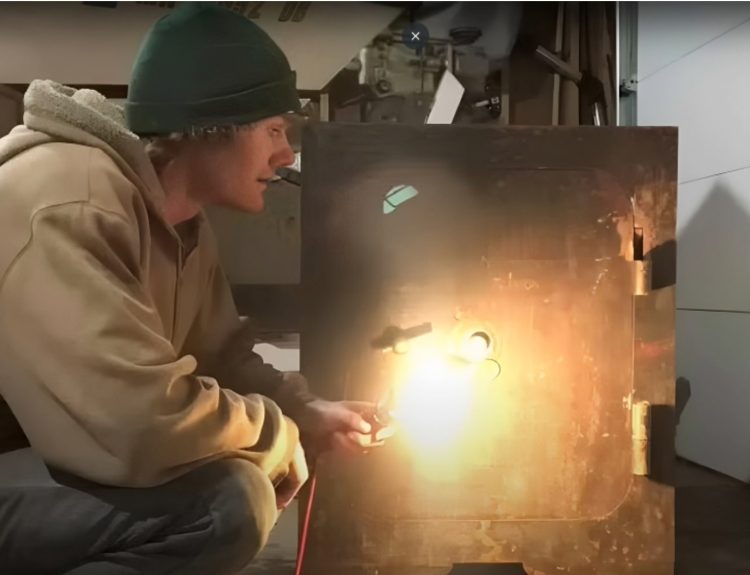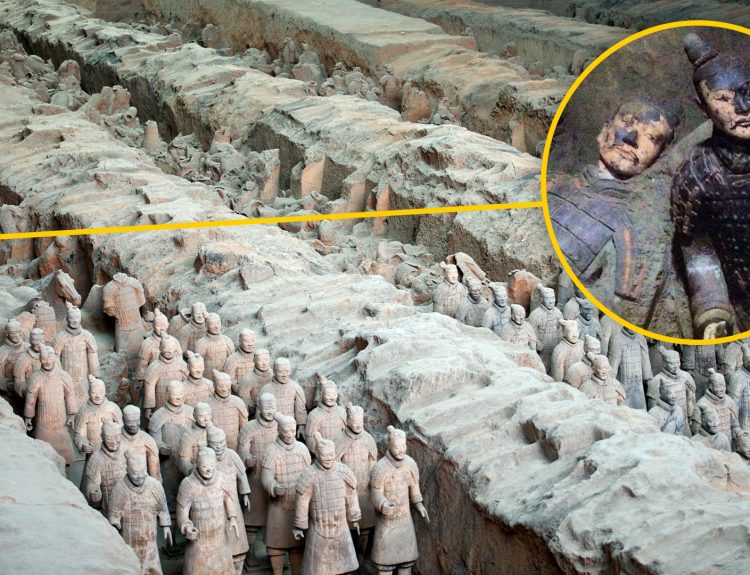Record droughts hitting South America’s Amazon Rainforest have had a devastating effect on the region. Some rural farmers and villagers, who rely on the waterways as a transportation route, have been stranded without access to stores and hospitals. And dozens of Amazon River dolphins have perished as water levels reach all-time lows.
The low river levels brought on by the drought have had one positive and unexpected result. It has exposed ancient rock carvings that had never been studied before and has allowed archaeologists to learn more about the indigenous people who inhabited this part of Brazil thousands of years ago.
A Perfect Storm to Create a Drought
The Amazon region is prone to natural cycles of wet and dry weather. The area typically experiences a rainy season from May to September and a dry season from October to April. During the dry season, water levels on the Amazon River and its numerous tributaries dip down, however this year has been especially dry.
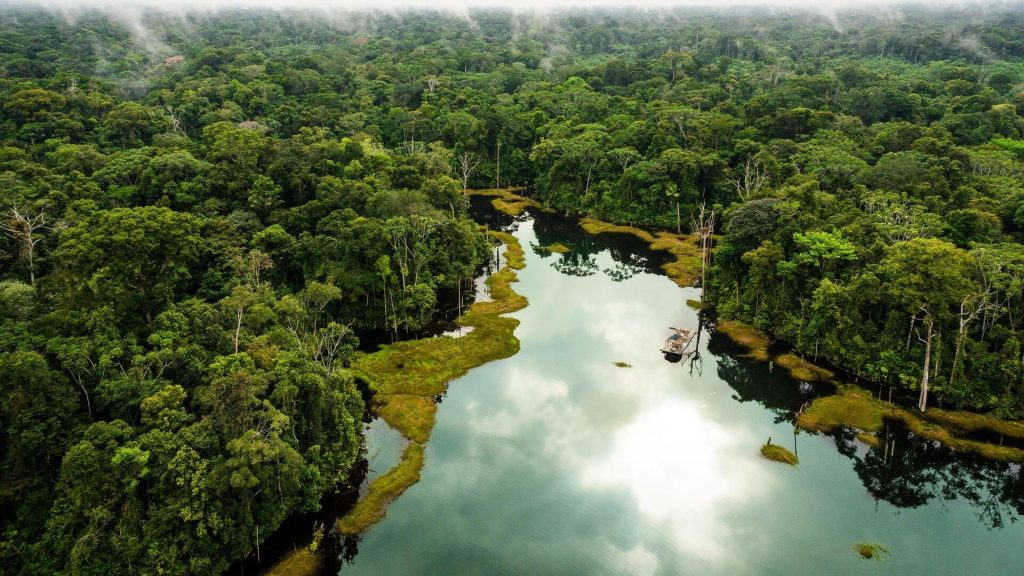
Two different climate phenomena have converged to create a perfect storm of conditions that have caused the Amazon to experience unprecedented droughts. One is the unusual warming of the waters of the northern tropical Atlantic Ocean. The other is El Nino. An El Nino year is marked by a warming of the surface waters at the Pacific Ocean’s Equatorial region.
A 100-Year Drought
The combination of these two factors has contributed to the worst drought conditions in more than 100 years. Many of the smaller tributaries of the Amazon River have been especially impacted. One of them is the Negro River of Brazil, so named because the water is dark brown in color.

The water levels of the Negro River have dropped to their lowest in recorded history. Water depths are now below the 13-meter mark, or 42 feet 8 inches. The drought has been viewed as devastating to the people living in the region, but it has opened a previously closed door for archaeologists.
The Meeting of the Waters
Along the Negro River near the Manaus, the capital city of Amazonas state and the area’s largest metropolitan area, is a place called the “Meeting of the Waters”. Here, the Negro River and the Solimoes River converge in a truly unique way.
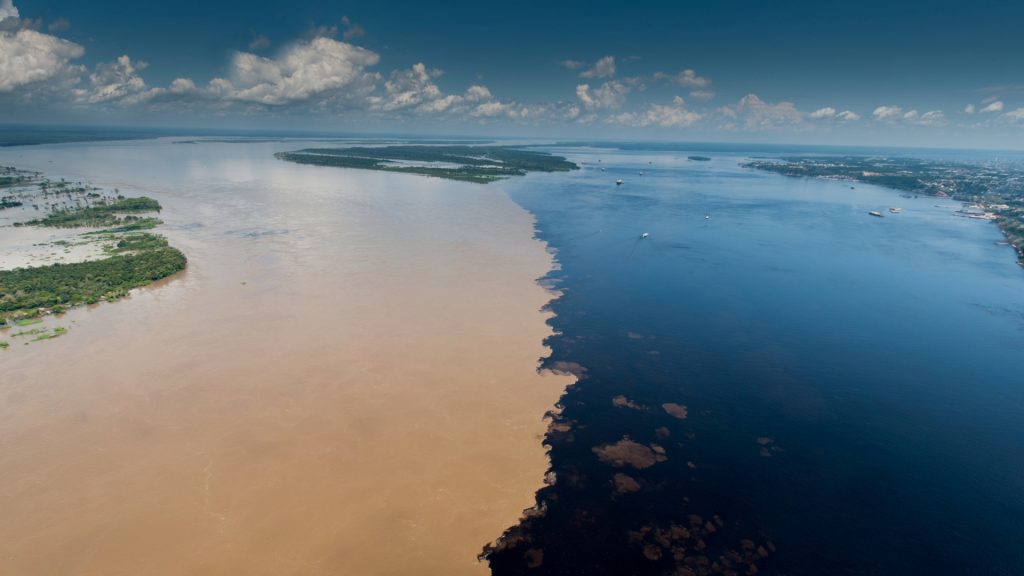
The waters of the Negro River are rich and dark while the Solimoes River’s water is a much lighter clay color. When the rivers converge, the waters do not mix together. Instead, the dark water and the light water flow alongside each other for several miles. It is an unusual sight to see and attracts tourists eager to observe this peculiar natural phenomenon.
The Place of Slabs
In this area, we can also find the Ponto das Lajes – or Place of Slabs – archaeological site. Researchers such as Jaime de Santana Oliveira, a noted archaeologist with the National Historic and Artistic Heritage Institute of Brazil, have been studying this area for a number of years.
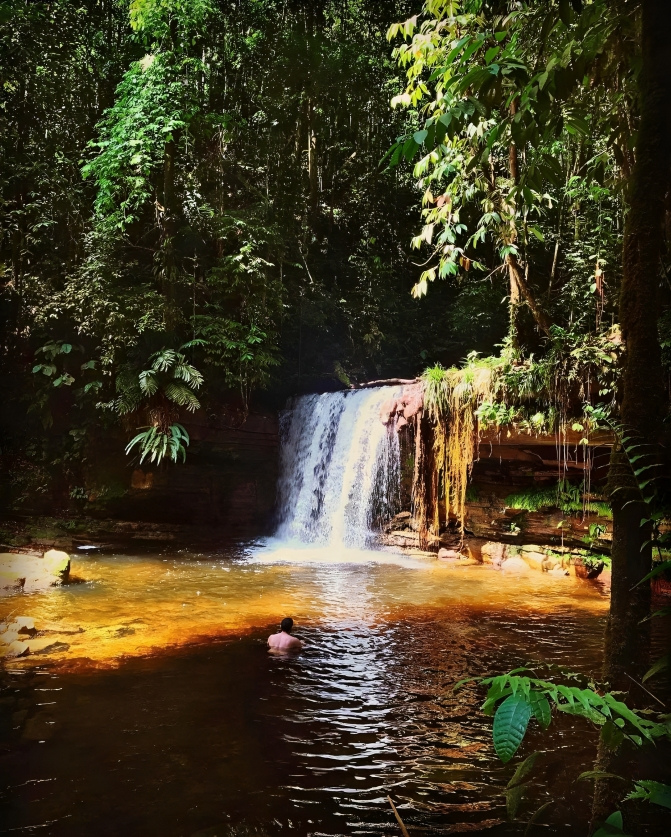
Back in 2010, during another drought cycle in the Amazon, receding waters gave archaeologists a brief glimpse at a series of petroglyphs, rock art, carved into the face of the rocky slabs. Once the water levels returned to normal levels, the petroglyphs were once again hidden from view.
2,000-Year-Old Carvings
Now that the water levels are at an all-time low, Oliveira and other archaeologists have returned to the Place of Slabs and have been astonished by what they have found. The ancient petroglyphs are much more extensive than previously thought. The carvings in stone show, among other things, human faces.
The carvings are estimated to be as old as 2,000 years. In addition to the human faces, they depict animals, water, and other natural features. As Oliveira explained, “We cannot date them exactly.” He added that the estimation of the rock art’s age was made based on evidence of early human settlements in the area.
Pre-Columbian Life in the Amazon
Along with the carvings on the exposed slab, archaeologists have discovered shards of pottery and ceramic pieces in the area that are believed to be thousands of years old. According to Oliveira, the place where the Negro and Solimoes rivers meet has been a special place for the indigenous people of the region for thousands of years.
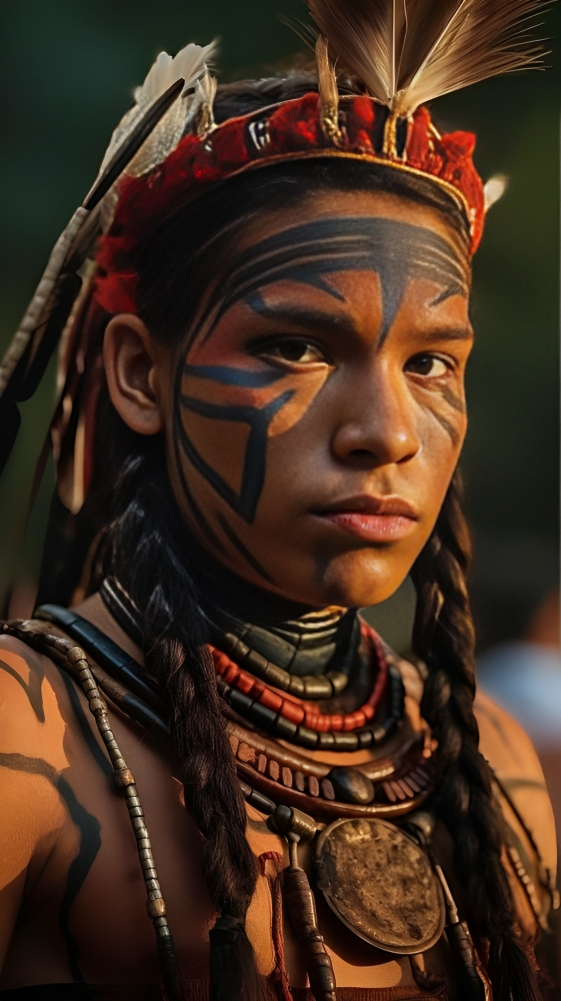
Evidence points to the theory that a large, pre-Columbian village or a collection of villages once sat at this place. The discovery of the rock carvings adds another layer of understanding about the lives of Amazonian tribes long before the arrival of Europeans.
A Center for Tool Making?
In addition to the carved faces and animal motifs, archaeologists have noted one area of the hard, black rock slab where straight, smooth grooves have been cut into the surface. At first, the researchers were puzzled by these marks, but then a new theory emerged.
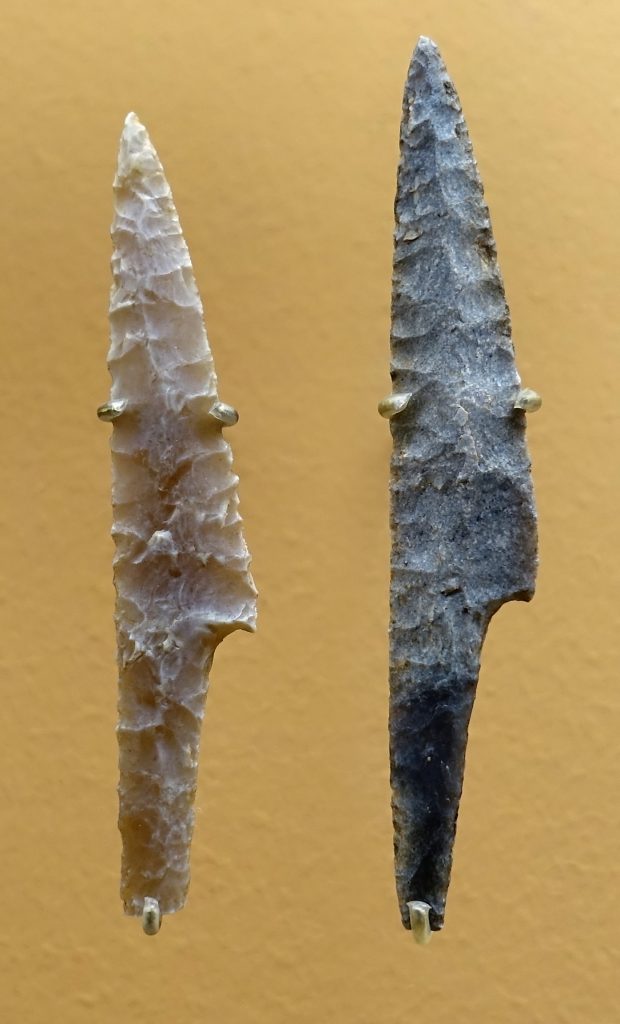
Archaeologists now believe that these deep grooves in the rock were where ancient indigenous people sharpened their tools, spearheads, and arrowheads. The density of the rock and the proximity to the river would make it an ideal whetstone. Does this mean that the ancient village was once a center for tool making and weapon making for the native civilizations? It is a possibility that scholars are studying.
Evidence of a Pre-Columbian Drought
One thing is apparent about the carvings on the rocky slab … they were carved when water levels were low. To access the rock face, the river had to have been low, as low as it currently is. The black slab must have been above water when this ancient village thrived.
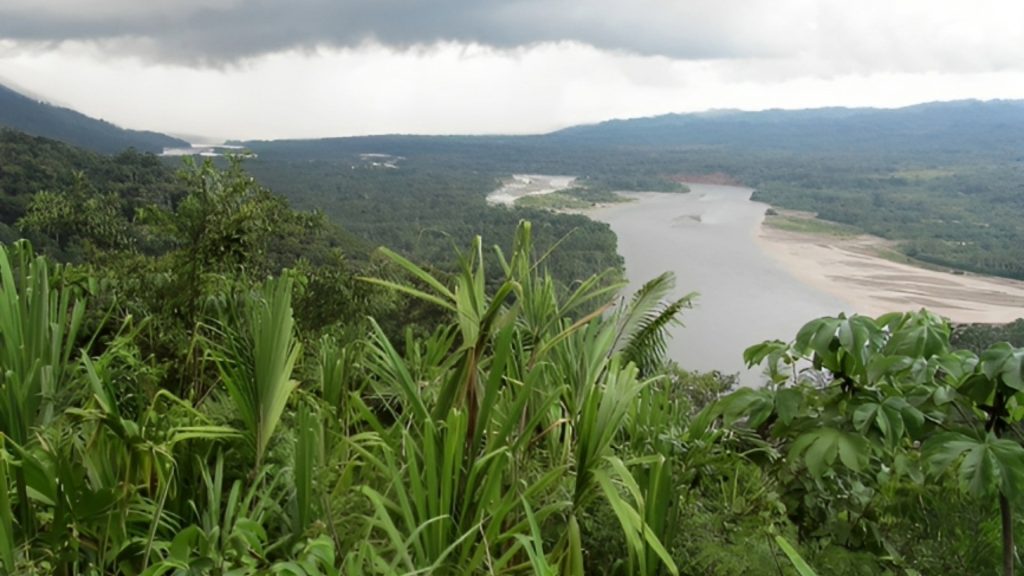
That evidence points to one conclusion. The region must have faced similar devastating droughts in pre-Columbian times. The low water would have made the once-navigable rivers impassable and forced people to travel via overland routes. Did this cause conflicts between various tribes? Is that why there was a need for weapon making? These are the questions the scholars are hoping to answer.
The Window of Opportunity Is Closing
The Amazon River basin continues to go through wet and dry cycles so the archaeologists understand that they probably have a small window of opportunity in which to fully study the newly found rock carvings at the Ponto das Lajes before the water levels rise again and the pre-Columbian carvings are hidden from view.
The Ponto das Lajes has been designated an official archaeological site but there is much work that still needs to be done there. As Filippo Stampanoni Bassi, an archaeologist working at the site, explained, this discovery “tells the region’s ancient indigenous history and must be treated with respect by all of us who live in Manaus today.”


